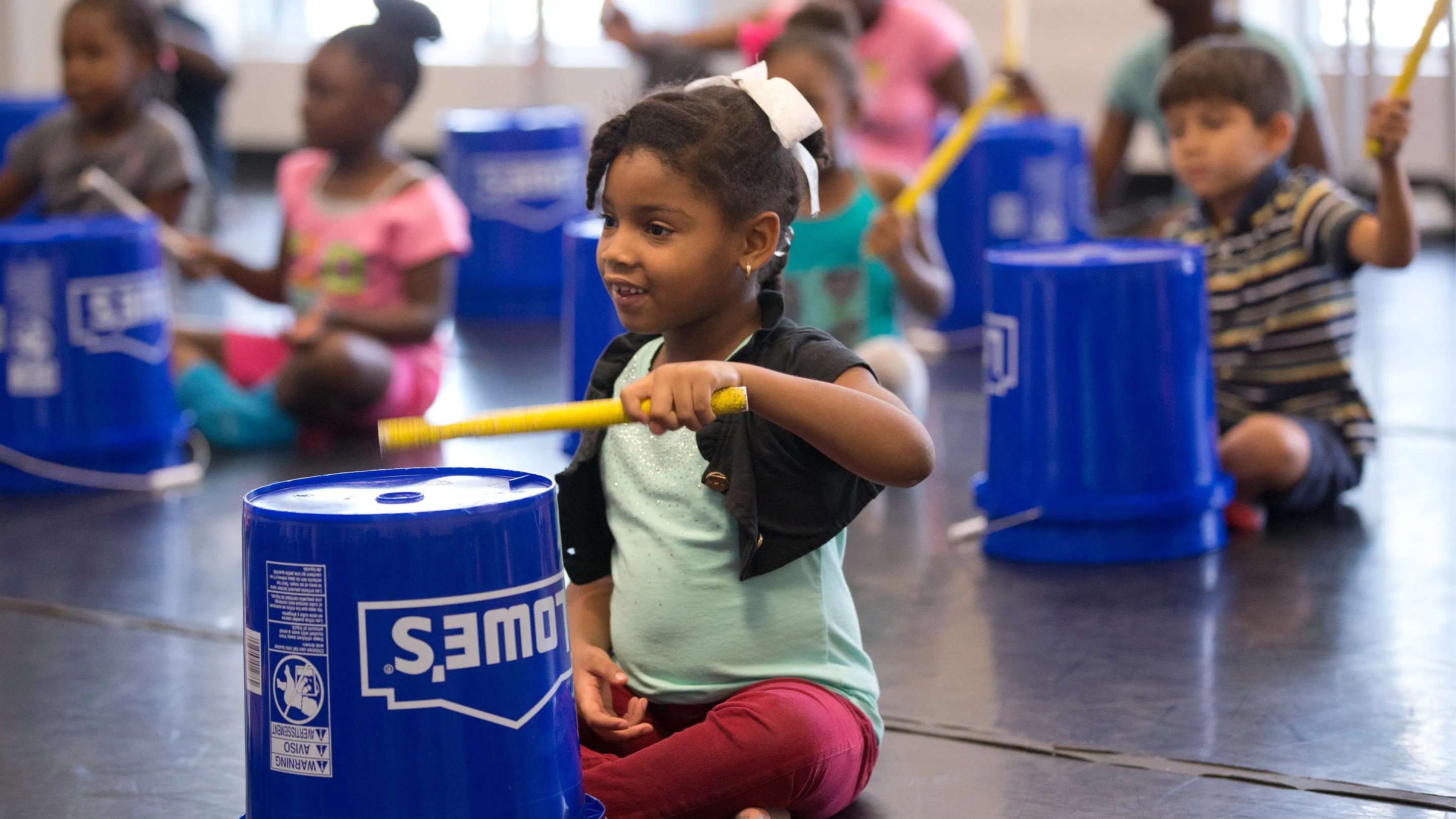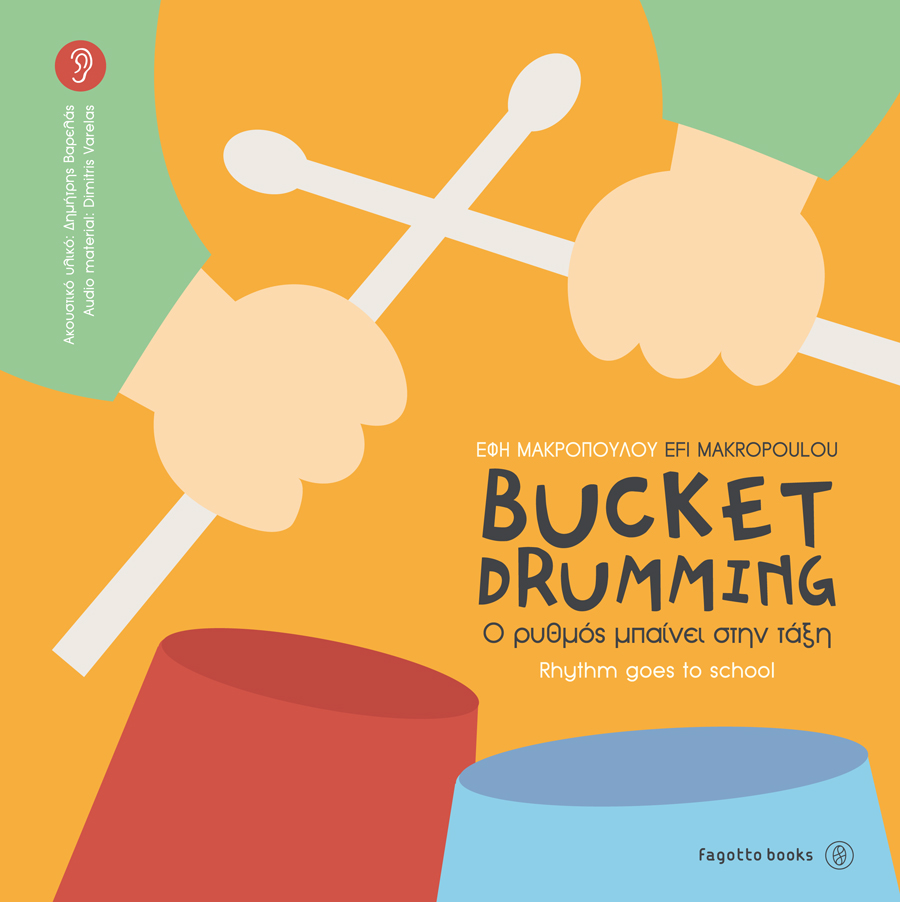Sparking Students’ Interest in Music With Bucket Drumming
These inexpensive instruments can open up enriching experiences that guide elementary students to enjoy learning how to play music.
Five-gallon plastic buckets are great drums—flipped upside down, the bucket has a responsive head and a built-in resonator. Bucket drums can create eight tones that correspond to standard drum set timbres. This versatility and the low investment cost are making bucket drumming a fast-growing trend in music education—great for music teachers who want to add a new dimension to their curriculum on a modest budget or classroom teachers who are looking for highly kinesthetic, cooperative, and creative brain breaks.
GETTING STARTED WITH THE MUSICAL BASICS
How many sounds? Before passing out any buckets, ask players to imagine all the sounds the buckets could create. As buckets are passed out, students work together to discover the eight (or more) sounds on the instrument.
Call and response: At this point, the room is loud, but a few simple call-and-response patterns (repeating a simple rhythm played by the leader) bring everyone together. Once this back-and-forth is established, the next step is a simple formative assessment: assessing accuracy in the response while increasing the rhythmic and tonal complexity.
Where’s the beat? As the teacher plays repeating rhythmic patterns, players find and play the steady beat. It may take some trial and error and explanation, but this fundamental understanding sets up players for the next activity and a more complete understanding of music.
Complementary rhythms: A tenet of this kind of jam-session-in-the-round playing is that a few simple ideas played together and in sync will sound and feel better than one person playing a complicated pattern or overly fast. Start with a simple repeating rhythmic pattern, then invite players to add different but coordinating rhythm patterns on top—complementary rhythms. It quickly becomes clear that simple, steady ideas work better in the group than complicated ones.
Organic differentiation: Through these exercises, organic differentiation starts to occur. Students begin to understand what their skill limits are, and they play at that level, noticing that going beyond their level messes up their playing and interrupts the group flow. This differentiation can occur with minimal direction from the leader or other players.
BUCKET DRUMMING ENHANCES SOCIAL AND EMOTIONAL DEVELOPMENT
Controlled applause: At my school, we use a simple clapping response when we are honoring students. When a name is called, everyone claps once, then after a description of why the person is being honored, everyone claps twice. This simple approach allows us to honor students in a way that is equitable and fast-paced. Incorporating an honorary bucket drumline for this is a next step. Trusted musicians can lead the clapping through playing their drums.
Intergenerational learning: One of my main venues for bucket drumming workshops are library programs. These workshops are often attended by children with their parents or even grandparents. The organic differentiation makes it possible for people with a wide range of playing abilities to make music together. Bucket drumming is a great family event or outreach activity for connecting with senior citizens or younger students.
CONTROLLING THE VOLUME
Thin sticks: Thin drumsticks work best, not only for volume control, but also to reduce potential damage to the buckets. Drumsticks are sized by number and letter. 7A is a popular light-size drumstick that works well with plastic buckets. These can be bought in bulk at low prices on Amazon.
Playing outside: Bucket drumming is a fantastic outdoor activity. It worked well for me to have students carry out stools to sit on and play in a paved area. Students who were sensitive to loud sounds didn’t have any trouble once we were playing outside. Be aware that grass or turf surfaces will absorb sound considerably.
Rotating players: A circle can be set up with drums for only every other student. When students aren’t playing, they’re watching and learning what to do. Rotating every one to two minutes is a good pace to keep players engaged.
OPPORTUNITIES FOR CREATIVITY
Decoration: Students could paint (and repaint) buckets to fit themes for performances. Wet paint could be poured on drums while playing, creating a splattering effect channeling the performance styles of the Blue Man Group. Attaching cardboard or even wooden decorations to the drums would also be easy.
Lights: Plain white buckets are easy to light from the inside. A colleague of mine, elementary music teacher Alison Labita, also purchased light-up drumsticks to enhance this effect in her performances.
Harnesses and marching: I have drilled eye hooks into the sides of the buckets and purchased cheap harnesses for informal marching drumlines.
So, when you need a fresh idea, whether for music classes or a musical infusion into the general classroom, get to your local home supply store, get some buckets, and get drumming!
Το βιβλίο Bucket Drumming: ο ρυθμός μπαίνει στην τάξη είναι ένα πρακτικό βιβλίο και απευθύνεται κυρίως στον εκπαιδευτικό μουσικής που διδάσκει σε παιδιά ηλικίας 6 ετών και άνω. Το bucket drumming τα τελευταία χρόνια έχει καθιερωθεί διεθνώς στη μουσική εκπαίδευση και όχι άδικα.

